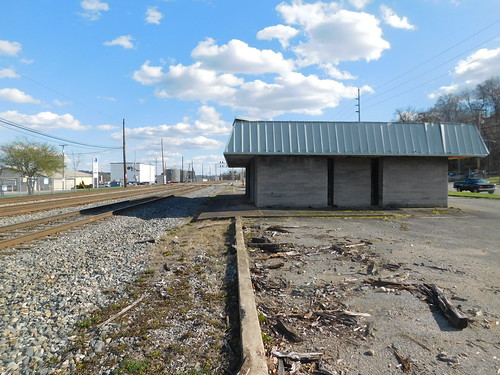Well, but also consider what kind of decay Amtrak was fighting against in the Rainbow Era. An extremely high percentage of their inherited stations were completely decrepit, the tracks were decrepit, the equipment was decrepit. Standardization served a very important purpose in mending fences with customer service. Yeah, the equipment was still pretty sad...but by Year 3 or 4 it had been completely repainted in a consistent scheme and looked cleaner than it had in decades. Yeah, the tracks still sucked...but at least they had a master plan in motion for acquiring and sprucing up the NEC and had shuffled some money around to at least weed-spray a lot of their hosts' tracks on other major routes. And the standard stations, utilitarian as they were, were clean and functional where the ruins that preceded them were anything but. And historical preservation was still in the dark ages compared to all the historical station rebirths that have happened since, while new stations weren't being built with any sort of architectural distinction or faux-historical touches. Amtrak didn't have the wherewithal to make a clean sweep on very much physical plant back then...so the cross-country cookie-cutter Amshack "Marshall Plan" was one of the few viable plays they had to try to prove to the public that they cared about keeping and improving the passenger network for the long-term. And it worked. You got a friendly, consistent customer-facing experience not at all unlike an airline ticketing counter + boarding gate that Americans were familiar with. The train and the tracks may have been antiquated, but the travel experience as a whole got more orderly and wasn't nearly as chaotic as it was before.
Amshacks are butt-ugly and you'd have to be contrarian-in-love with ugly kitsch to want to historically preserve more than a couple examples of the travel equivalent of shag carpeting...but there's no question Amtrak wouldn't be here today if they hadn't built all those things in the name of standardized customer service experience.
Idea!: Somebody needs to create a near life-size fold-up Amshack with accurate furnishings that can be loaded onto the Exhibit Train and set up/broken down anywhere as a pop-up kiosk. Don't forget, their 50th Anniversary is less than 4 years away. It'd be like an artfully disguised shed or tent you could have historical exhibits inside, or pop up a podium to make a major local speech. Everything 1970's is kitsch nowadays, so they might as well embrace the kitsch that's in their own DNA for fun.

